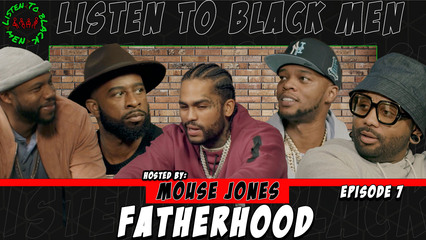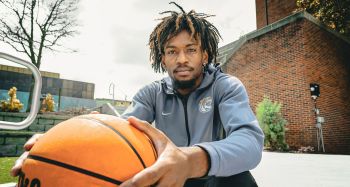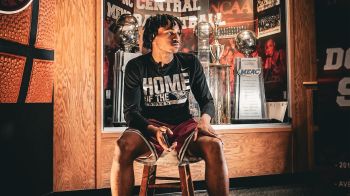
Source: Albert L. Ortega / Getty / Kemp Powers
Spider-Man: Across The Spider-Verse’s co-director Kemp Powers talks about the animated feature raising the bar in animation, the research process into nailing the fine details that go into making the film, and the importance of inclusion.
We have numerous live-action film adaptions of Marvel Comics’ popular hero Spider-Man, aka Peter Parker, mostly good, while others are getting a second wind thanks to revisionist history.
But the story of Afro-Latino superhero Miles Morales has taken the world by storm thanks to two animated films, Spider-Man: Into The Spider-Verse and the latest entry into the trilogy, Across The Spider-Verse.

Source: Sony Pictures / Spider-Man: Across The Spider-Verse
Comic book fans and casual moviegoers have taken a huge liking to Sony Animation’s gems because of its eye-grabbing animation, which is a mix of different styles that seemingly jumps off the screen.
The animated Spider-Man film’s animation style is so good that you can say that other studios have begun making their animated movies using a similar style.
Ahead of Across The Spider-Verse releasing on 4K UHD and Blu-Ray, Cassius Life spoke with the film’s co-director, Kemp Powers, who is no stranger to the world of animation, having worked on Pixar’s Soul, starring Jamie Foxx.
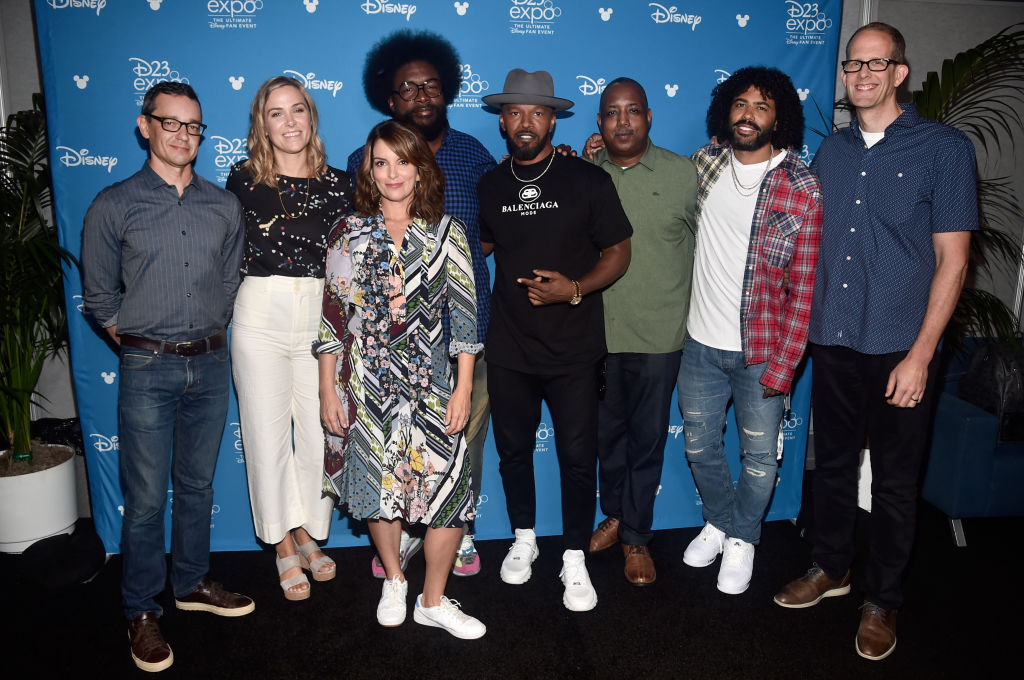
Source: Alberto E. Rodriguez / Getty
Both Into The Spider-Verse & Across The Spider-Verse Are Leading The Wave of New Animation
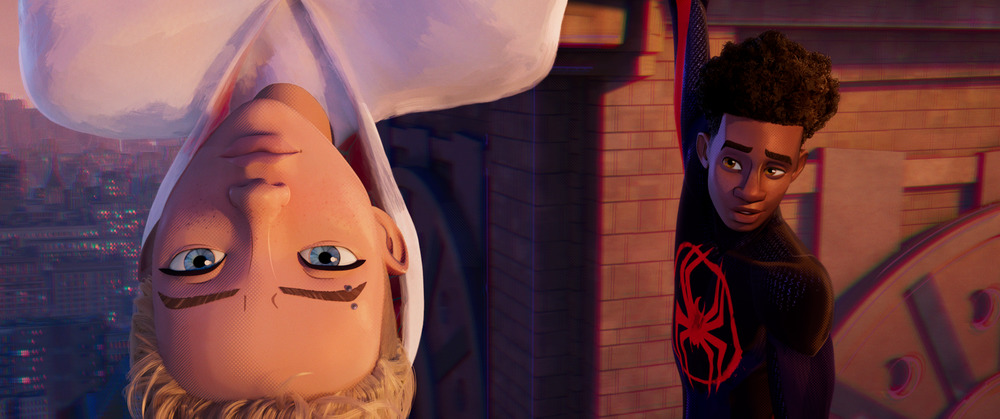
Source: Sony Pictures / Spider-Man: Across The Spider-Verse
Powers didn’t work on the first film but joined the directing team for Across The Spider-Verse. We touched on how Into The Spider-Verse and Across The Spider-Verse is ushering a wave of a new animation style present in films like TMNT: Mutant Mayhem and Puss in Boots: The Last Wish.
“Honestly, I think Into the Spider-Verse inspired me,” Kemp begins. “At the time that that film came out, I was still working on Pixar Soul. So when I first saw it, I was in production on Soul, and it blew me away just the way it did everyone else. And I think it really opened people up to the idea that there doesn’t need to be one kind of house style for 3D CG animation.”
“And I think that what they did, and I mean coming in on this, that’s part of the reason why I wanted to work on Across the Spider-Verse was they also didn’t even want to repeat what they did in the first film in this one. It was exciting to me because it was like, oh, now that we’ve done this new thing, we don’t want to do any of that. We want to now do completely different things for this visually with the storytelling. We’re going to go to all these different universes, each that have their own distinct style, and there were new problems to be solved, and I think we successfully solved them on the film.”
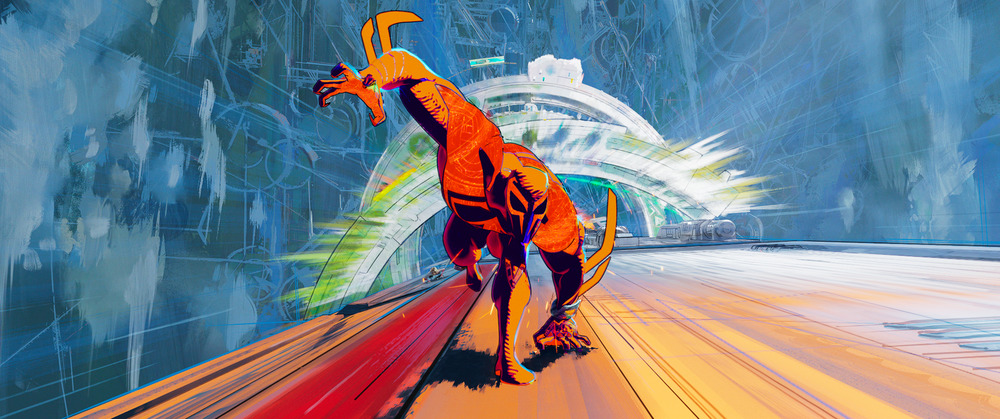
Source: Sony Pictures / Spider-Man: Across The Spider-Verse
So I think that rather than inspiring people to copy it, what I love is that it just inspires people to try things completely different.
He continues, “So I think that rather than inspiring people to copy it, what I love is that it just inspires people to try things completely different. I had such a good time watching Teenage Mutant Ninja Turtles: Mutant Mayhem because it looked so different than anything else I’d seen. I don’t think it looked anything like Spider-Verse. It looked like its own very, very distinct thing. And that’s exciting. The idea that I could be surprised by something visually going in to see an animated feature. And I think that’s part of the reason why I think audiences feel compelled to go see them, particularly in movie theaters, because it’s like part of that experience. You haven’t really seen it if you haven’t seen it up on the screen. It really optimizes that.”
Kemp Powers Breaks Down The Process Into Making Across The Spider-Verse

Source: Sony Pictures / Spider-Man: Across The Spider-Verse
When watching Across The Spider-Verse, one thing that will immediately pop out is the amazing detail that goes into every scene. Kemp revealed that nothing is done by accident, and what you are seeing is the experiences of the 1,000 people who worked on the film.
“Well, the thing about animation is nothing you see is there by accident. Everything literally has to be built by the hands of an artist,” Kemp begins. “And in the case of Across the Spider-Verse, we had a crew of about a thousand people, and all of those thousand people brought their own experiences. They brought their own research. From the very beginning, the early stages, you’re doing a lot of visual development. You’re deciding on the look of everything from the worlds to the characters. You’re looking at visual references. You have costume designers who are showing us images of different kinds of clothes, and we’re building out the look of the characters. So we actually have a lot of time in the beginning to obsess over all of those details.”
“People were making fun of me for a while because of the scene at the barbecue, how much I obsessed over Jefferson’s shirt, you know what I mean? Because Brie, one of our designers who worked on the clothes for Jefferson and Rio, we had her do so many dozens of different shirts, and it got to a point where I just realized I just wanted to see Jeff in a shirt that I was wearing. You know what I mean? So it was just kind of like they included designs. I tend to wear these vertical stripes. I tend to wear certain colors. And I was like, I just want to see him in a shirt that I’d want to wear. I mean, he’s basically almost my age anyway, so I just want to see my shirt.”
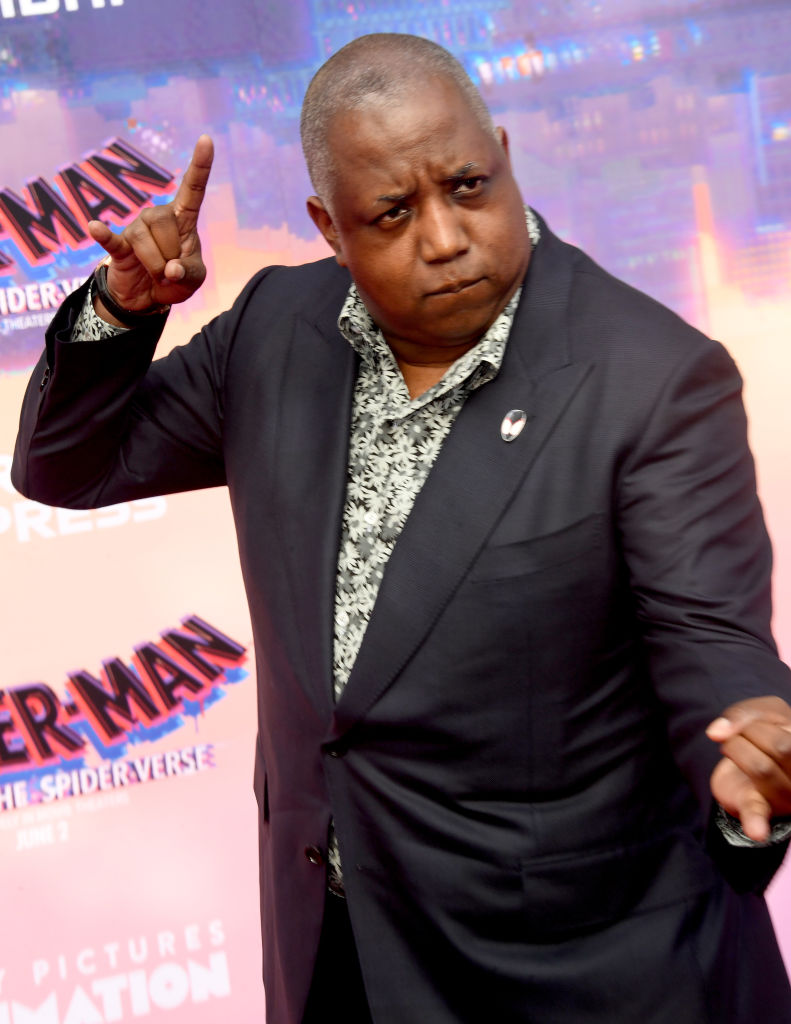
Source: Albert L. Ortega / Getty
He continues, ” But you obsess over, and everyone obsesses over that. We have people who would obsess over the food, like the food on the table. People who are Afro-Latino or Puerto Rican. And it’s just like, okay, well, what should we have at this barbecue? You know what I mean? And it’s a blended black and Latino family, so what are the foods that will probably be up here? And people just go, it’s evident, and I think in every single frame of the film, but it’s important to know that none of it is casual. None of it is by mistake. All of it is done with intent. And I think that really shows when you see the final film.”
Inclusion Was Not On The Top of Kemp Powers Mind When Working On Across The Spider-Verse
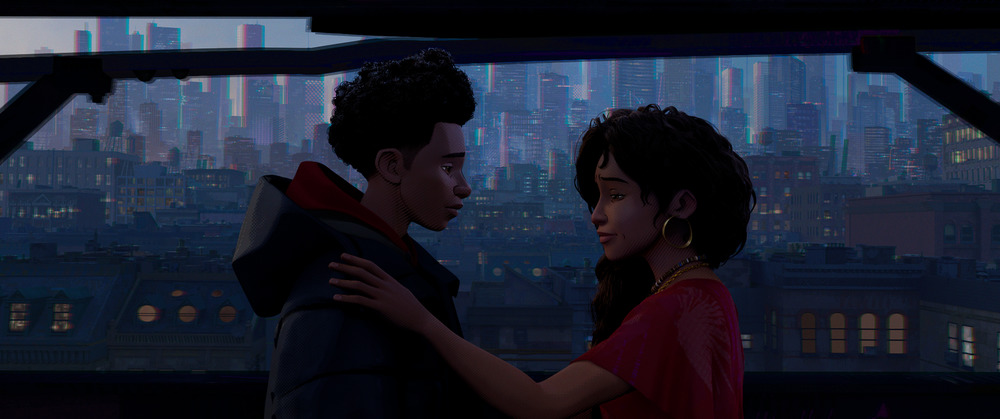
Source: Sony Pictures / Spider-Man: Across The Spider-Verse
Powers is no stranger regarding the topic of inclusion, being that he worked on Soul, which was Pixar’s first animated feature to have a Black lead. For Across The Spider-Verse, inclusion was already tackled in the first film, but Powers revealed that it’s not a main concern when making his films, pointing out that viewers will know when you are “trying too hard” to be inclusive.
He noted that he uses growing up in Flatbush, Brooklyn, NY as his baseline when working on his films.
“That’s a complicated answer because if I’m telling the truth, it isn’t. And that’s only because I’m just representing the reality of my own world. You see what I’m saying? It’s just the world outside my window,” Kemp begins.
“We started in this conversation, where did I grow up? Flatbush. So to me, Flatbush is my baseline normal. To me, Caribbean food, Jamaican beef patties, are going to be like my baseline. It’s people who don’t know that, I’m like, oh, I don’t know. So what you’re starting from, it’s just, and I think all of us… When you try too hard, it’s tokenism and it feels fake. And I think audiences pick up on it, and that’s something you never want to do. So what I’d like to say is that I think it was kind of effortless because we weren’t trying too hard. When you have a truly representative diverse world, then you also get freed up a little bit.”

Source: Sony Pictures / Spider-Man: Across The Spider-Verse
He continues, “Because guess what? When you’ve got more than one black character, then no one black character has to represent the whole race. Then they can be different kinds of people. You know what I mean? So it’s like you have multiple representations, you have lots of women, you have lots of men, you have black, Latino, Asian, you have all these different groups, and they’re represented in abundance.”
“And that’s just kind of the world, isn’t it? I mean, look at the audience going to theaters. I mean, if you have a real universal film these days, it kind of breaks down like Latino, white, black, Asian, like everybody has to come to everything nowadays. And so it almost feels like the natural order of things shouldn’t… The stories that we tell in the worlds that we create represent the world of the audience that’s coming in to see it. So yeah. You know what I mean? It’s kind of just natural.”
Spider-Man: Across The Spider-Verse is now available on VOD, 4K UHD, and Blu-Ray.
Photos: Getty / Sony Pictures / Across The Spider-Verse
